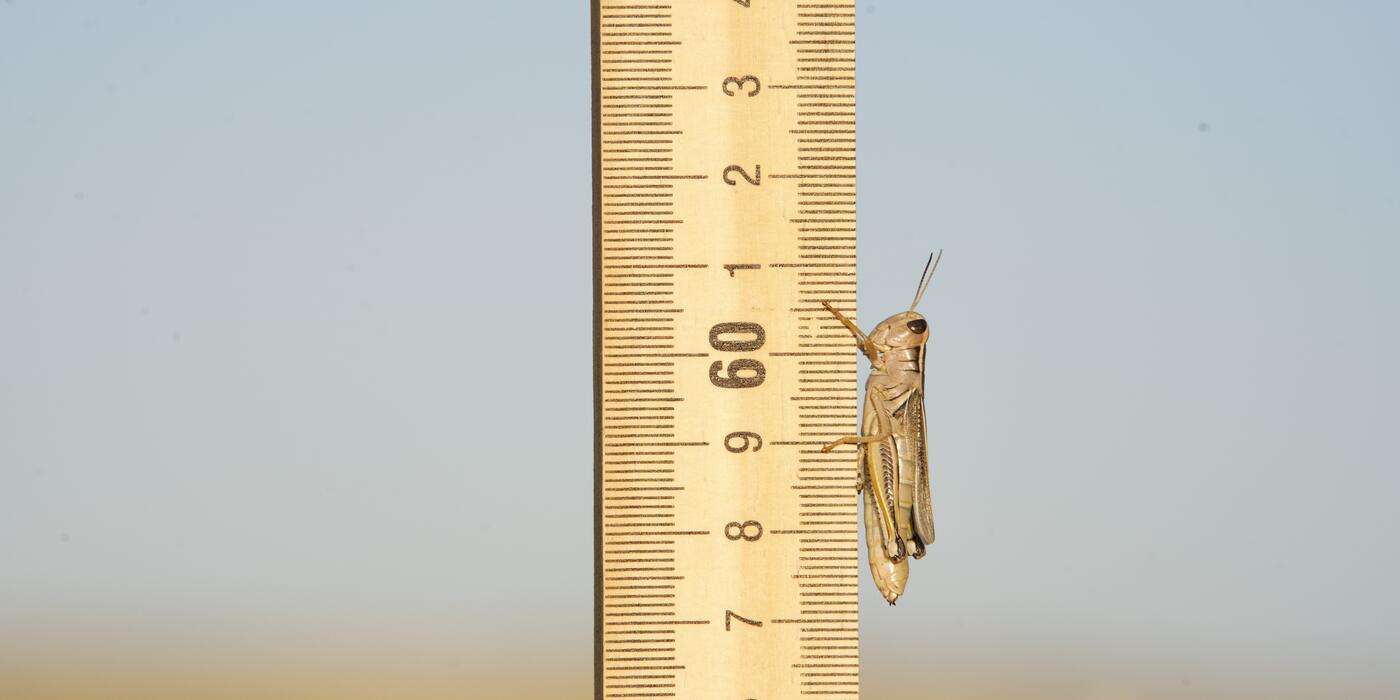Across the Smithsonian, Researchers Are Working Together to Save Virginia’s Birds
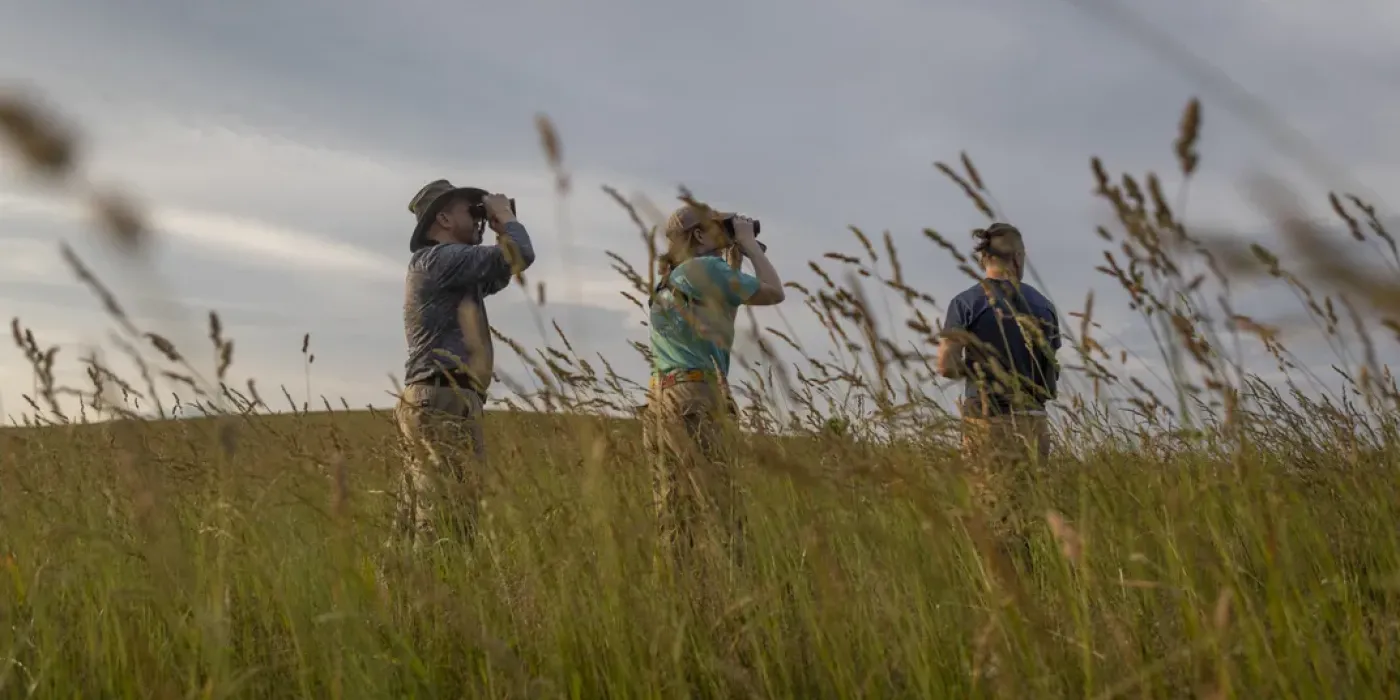
Through a creative collaboration, Smithsonian scientists are using historic collections and current conservation practices to bring back declining populations of grassland birds.
This story was written by Emma Saaty and first appeared on Smithsonian Voices. Header image by Percy Ulsamer.
Deep in the winding corridors of the National Museum of Natural History’s vast bird collection, museum specialist Jim Whatton carefully opened a large wooden drawer. A group of researchers from the Smithsonian National Zoo and Conservation Biology Institute’s Virginia Working Landscapes (VWL) program peered over the collection case, their eyes fixed on rows of speckled bobwhite quail specimens.
The birds looked pristine, as if they had been collected that morning. But the weathered paper identification tags tied to the birds’ legs told a different story. As VWL communications assistant Brooke McDonough examined a particularly timeworn tag, her breath caught. “Falls Church, VA. Nov. 2, 1904,” she read aloud.
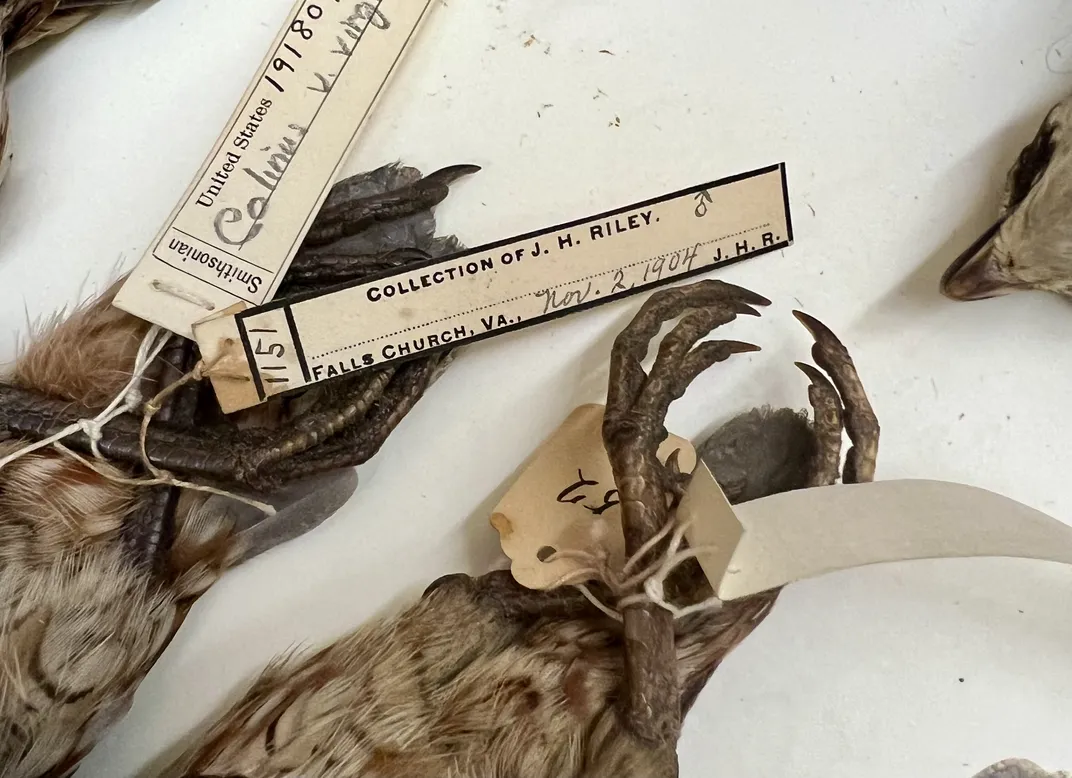
The National Museum of Natural History’s bird collection houses numerous quail specimens, some hailing from the farmlands of early 20th-century Falls Church, a county which has now been transformed by urban developments. Emma Saaty/Smithsonian National Museum of Natural History.
Falls Church, Virginia is now a heavily developed suburban landscape. It has not been home to native quail in decades. The once-familiar sound of their calls has faded into memory, and the birds have disappeared as mall complexes and housing developments replaced the farms and grasslands where they once thrived.
A heavy silence settled among the researchers as they stood before the century-old specimens. But beneath the weight of loss, a strong sense of optimism remained. These were the exact populations VWL has been fighting to restore, and their conservation practices are already starting to bring grassland birds back to Virginia.
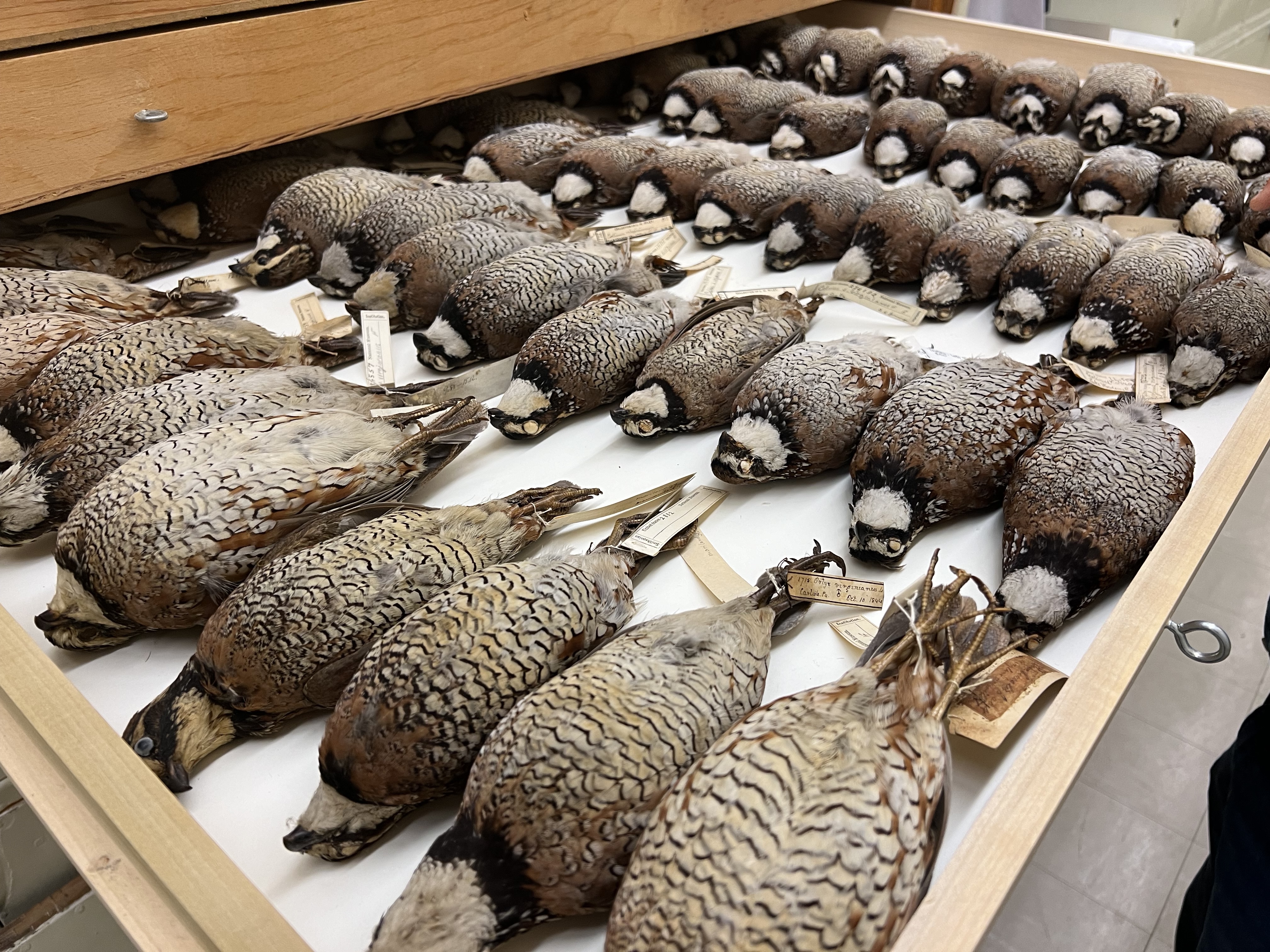
Historic collections give researchers a window into past species ranges and habitats, providing evidence for the steep decline grassland bird populations have faced in recent decades. Emma Saaty/Smithsonian National Museum of Natural History
The National Museum of Natural History’s (NMNH) bird collection houses over 600,000 specimens, representing 80% of the world’s bird diversity. The collection includes skins, skeletons, fluid preserves, eggs and nests collected from the early 1800s to modern times. “These historic specimens act as snapshots in time, providing researchers with tangible evidence of birds that have disappeared due to habitat loss,” Whatton said.
The museum also has the renowned Feather Identification Lab, where researchers like Whatton are tasked with identifying birds involved in aircraft strikes at airports. Airfields are grasslands, and Whatton says his team continues to see more and more birds attracted to these spaces as development is reducing their natural habitats.
“This is where VWL’s work comes into play,” Whatton said. “If they can bring those healthy grasslands back, the birds will have a safe place to live, and their populations should begin to recover.”
VWL’s goal is to promote and increase the conservation of native biodiversity and sustainable land use through local and regional research. The VWL team conducts research in a 16-county region in northern Virginia to understand how land-use practices impact biodiversity and ecosystem function.
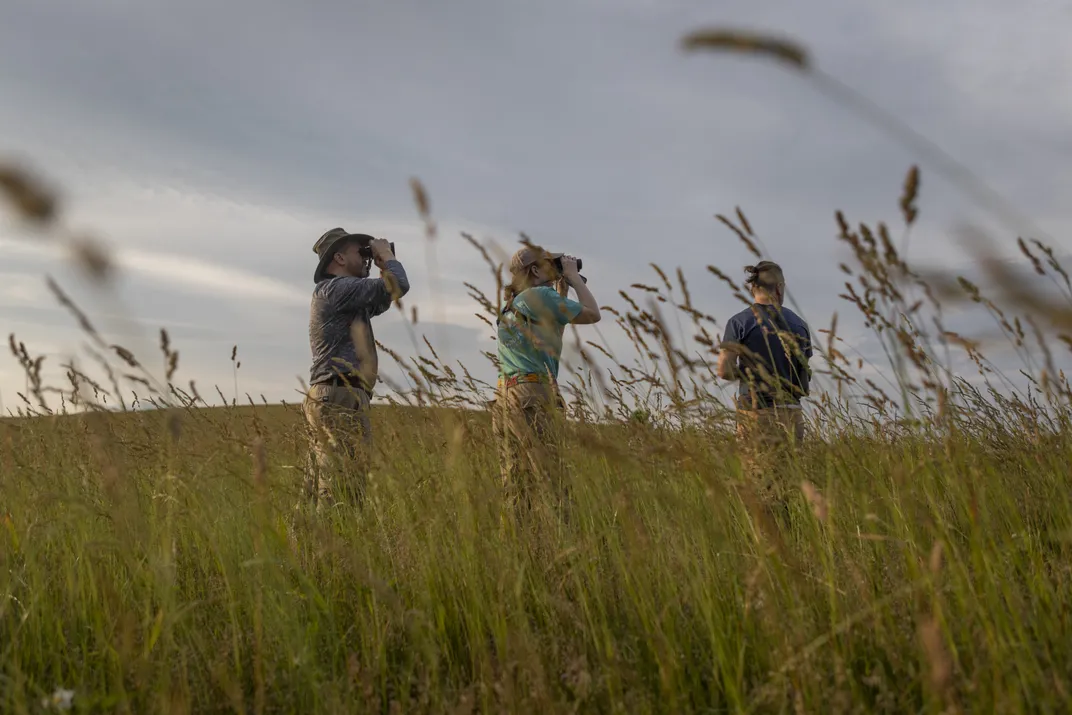
VWL’s Survey and Volunteer Coordinator Erin Shibley along with two VWL Volunteer Community Scientists conduct a bird point count survey as part of the annual Grassland Biodiversity Surveys. Brooke McDonough
“We've trained and deployed around 90 community scientists to help conduct biodiversity surveys on more than 90,000 acres of private land,” said Amy Johnson, a conservation biologist and program director of VWL. “We also have teams conducting research on bird- and bee-friendly farming, native grassland restoration techniques and ecosystem services to provide science-based recommendations for how we can better support our wildlife.”
In recent years, grassland habitats have become a major focus of VWL’s research and conservation efforts. Native grasslands are one of the most threatened ecosystems in the United States, and the farmlands where they once thrived continue to be the target landscape for urban development. Traditionally, northern Virginia was almost entirely farmland, but increased demands on the few farms that remain have forced some farmers to intensify their use of the land, doing away with shrubby edges, wet areas and hedgerows that supported local wildlife.

Falls Church in 1937 (left) vs 2017 (right) shows the landscape’s transition from farmland to urban developments and infrastructure. Fairfax County Historic Imagery Viewer
Over 60 species of birds rely on Virginia’s grasslands throughout the year to nest, collect food or over-winter. But during the past century, grassland birds have experienced the sharpest population decline of any bird group in North America. “Bobwhite quail have declined by more than 80% in the state of Virginia,” Johnson said. “We are only detecting quail on about 10% of the private properties we survey.”
While the plight of grassland birds seems dire, every member of the VWL team is united by one unwavering belief: it is not too late. As they continue to conduct biodiversity studies, VWL is committed to transforming their research into conservation action.
This action starts with collaborative projects like the Virginia Grassland Bird Initiative (VGBI), a four-core partnership that VWL co-leads with The Piedmont Environmental Council, the American Farmland Trust and Quail Forever. “We work directly in collaboration with landowners and farmers to create management practices that will allow birds to thrive on working landscapes,” said Justin Proctor, a conservation biologist and coordinator of VGBI.
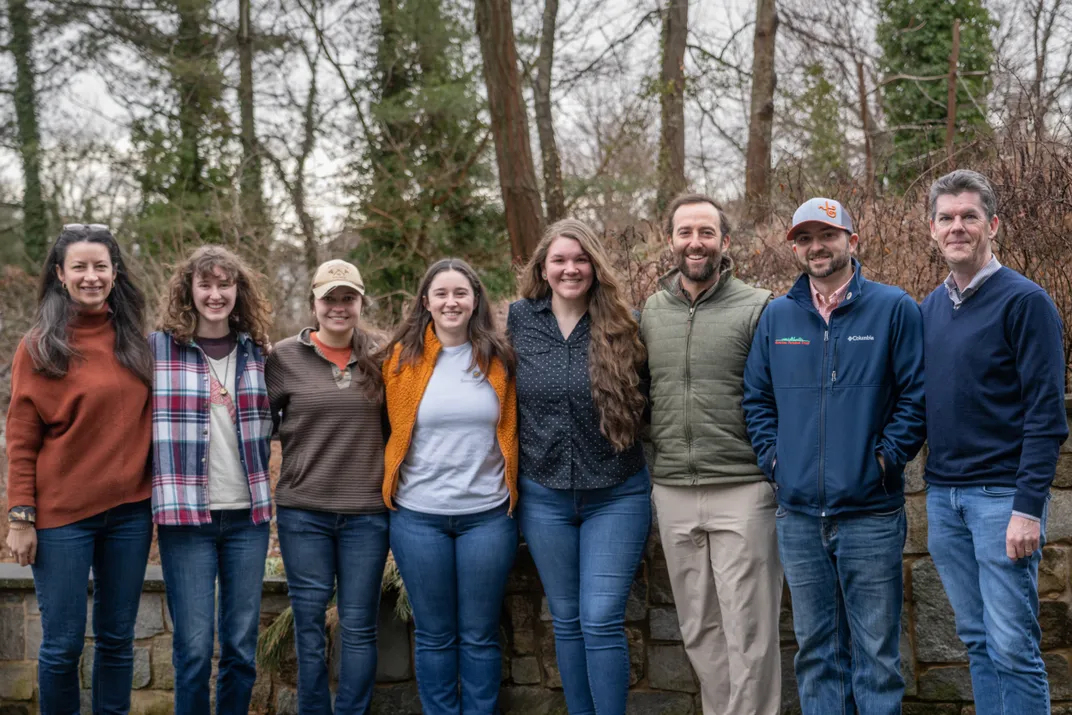
Members of the Virginia Grassland Bird Initiative. Left to right: Amy Johnson, Lauria McShane, Alison Menefee, Caty McVicker, October Greenfield, Justin Proctor, Jacob Gilley, and Mike Kane.
Proctor and the VGBI team take a holistic approach to conservation, developing creative ways to help farmers manage their grasslands for biodiversity and bird restoration without hindering the productivity of their land. Many of these practices align closely with the regenerative agriculture systems that an increased number of farmers are transitioning towards.
One of VGBI’s most successful management efforts has been adaptive grazing. The technique builds off rotational grazing, in which farmers cycle their cattle between multiple paddocks to allow previously grazed areas time to rest and regenerate. VGBI works to help farmers merge the needs of grassland birds with these pasture rest timelines, ensuring that birds have enough time to build their nests, lay their eggs and raise and fledge their young before the cattle return.
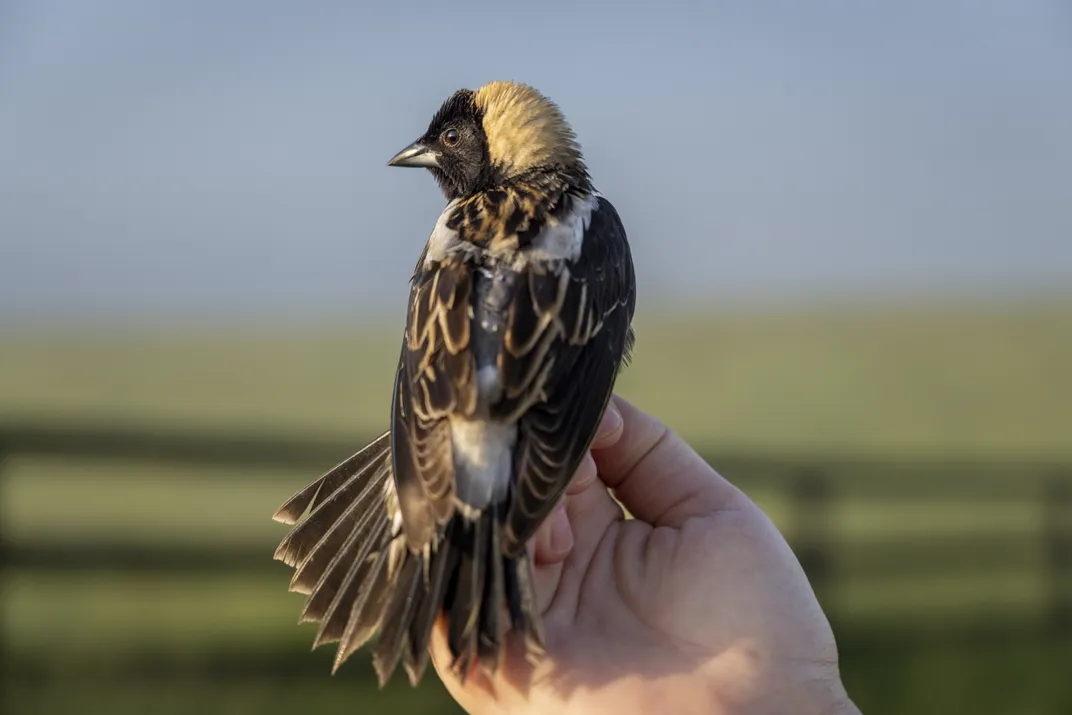
Bobolinks forage on seed-bearing plants in overgrown fields and grassy pastures across Virginia. Brooke McDonough
“We want our practices to fit into the already existing momentum of regenerative agriculture so this work can benefit everyone,” Proctor said. “Farmers have been the driving force behind this collaboration, and they are very excited to participate in creating positive change for our birds.”
VGBI has also focused on the cutting of hay, which is one of the most destructive agricultural practices for grassland birds. Farmers typically harvest hay in the spring season while birds are nesting in the tall grasses. Research from VWL found that if farmers delayed their haying by just a few weeks, it had a significant impact on bird survival in the area.
“We are already seeing a huge increase in bird populations in fields where conservation practices have been implemented,” Johnson said. “For example, if a farmer delays their haying until July 1st, we see up to an 80% increase in reproductive success for grassland birds on that land.”
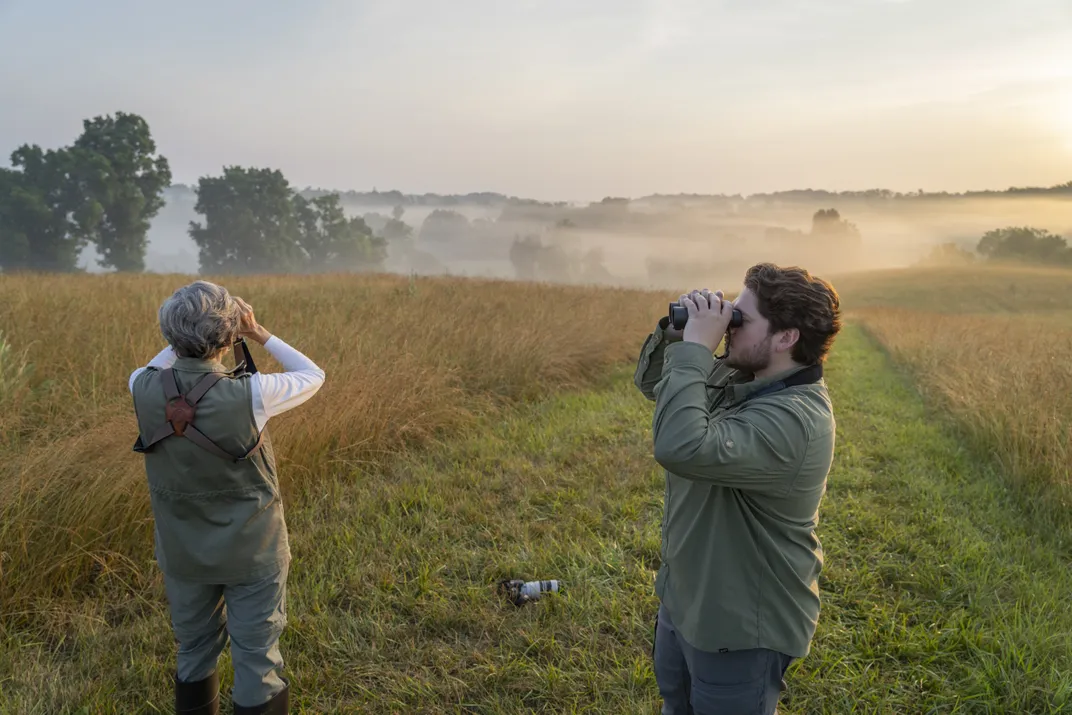
VWL’s Biodiversity Technician Christopher Rademacher and a Volunteer Community Scientist conduct a bird point count survey that will guide best management practices, helping landowners support native biodiversity conservation in Virginia. Brooke McDonough
In addition to introducing conservation practices on individual farms, VGBI also stresses the importance of raising awareness and harnessing participation across the entire northern Virginia community. One of the best ways that Proctor and the VGBI team have found to engage with landowners is through the story of the quail.
The bobwhite quail, also known as the Virginia quail, is a symbolic bird across the northern Virginia region. These plump, charismatic creatures require a mosaic of habitats including shrubs, native grasses, forests, wildlife corridors and hedgerows to survive. This means their conservation cannot end at a property line. As VGBI continues to raise awareness about these birds, landowners have been inspired to work together and get entire communities involved in saving Virginia’s quail.
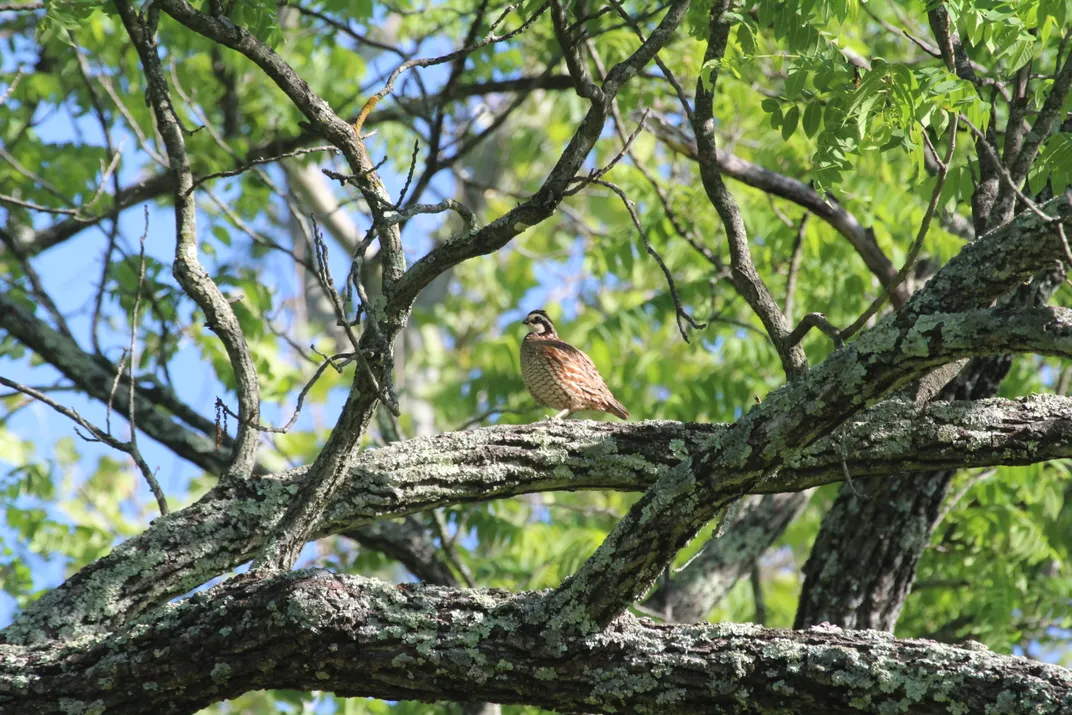
Grassland birds have been in decline across the United States, but landscape management techniques have been proven to help restore these populations. Christopher Rademacher
Back in NMNH’s bird collection, standing in front of rows of quail specimens that used to live and thrive in Virginia’s vast grasslands, Proctor and the VWL team realize exactly what they have been working for.
“This is a call to action. We have come dangerously close to losing something here in Virginia, but we are already seeing thousands of acres that are being newly managed with grassland birds in mind,” Proctor said. “There is hope for these species in the future, so let’s do the work and bring them back."
